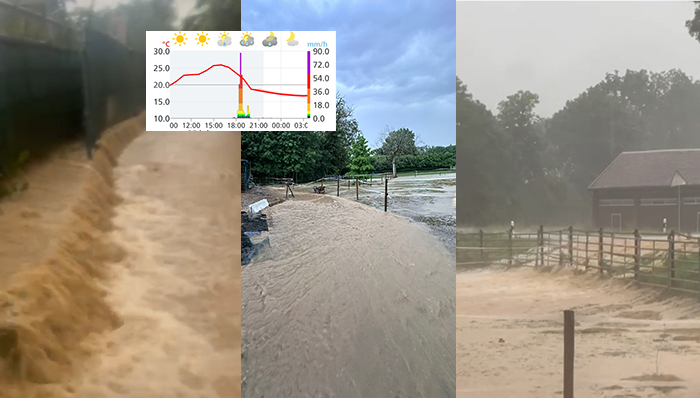
Hortonian overland flow – if you have ever followed a hydrology class, you have certainly come across this jargon: this is the name of a hydrological process – when rainfall flows off at the terrain surface because the rainfall intensity is so high that not all the water can infiltrate into the soil (rainfall intensity is higher than infiltration capacity).
Almost every hydrological model includes some parameterization of this phenomenon. Still, as I tend to tell my students in introductory classes: chances are high that you never observe it, except in impervious areas (in cities) or as concentrated flow along, e.g., hiking paths.
It took me indeed more than 20 years of my career to observe large-scale Hortonian overland flow in an agricultural area, in the region of Morges, Switzerland, on June 25 2024. An impressive local thunderstorm developed in the evening, as visible in the radar images below; one meteo station (Auberson station) recorded 74.9 mm in one hour, 112.9 mm in two hours (MeteoSwiss blog, compare also to Swiss extremes here). The Morges River left its banks and caused quite some damage.
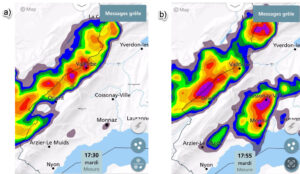
Printscreen at 17.30h (left) and at 17.55h (right) of the radar images of the MeteoSwiss-App in the Monnaz / Morges region, north of Lake Geneva; purple indicates highest rainfall intensities
I was in that area during the event and helped fight flooding from overland flow at a local farm (see header image). The rain was less intense than elsewhere in the catchment (the measurement station recorded a maximum intensity of 8.6 mm/10 min and 22.7 mm/h and a total precipitation of 40.8 mm). Nevertheless, I could hardly believe my eyes when I saw how much water was running down the gentle slopes surrounding the farm. It was truly apocalyptic.
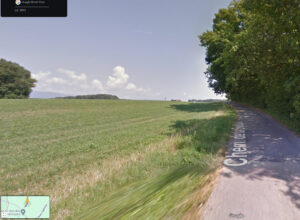
View of the gentle slopes that caused flooding, Google street view
The next day, I went out to look for traces of the hydrological processes at work. The agricultural fields showed clear traces of Hortonian overland flow at entire crop scale (fields of several hectares), whereas the pastures absorbed all the water. Part of the local overland flooding was clearly due local agricultural practice (crop with bare soil between vegetation rows). This is not surprising from a hydrological process point of view; bare soil decreases the infiltration capacity and favors Hortonian runoff. This corresponds exactly to what I teach in hydrology classes, by e.g. discussing the synthesis of hydrological processes according to Dunne, 1983 . And the spot is indeed at risk according to the Swiss overland flood map. Still, it is an impressive experience when you see how local overland flooding builds up in an agricultural area with little impervious area. And it reminded me that we need to do a much better job at teaching and communicating what climate warming and the ensuing increase of heavy rainfall events means.
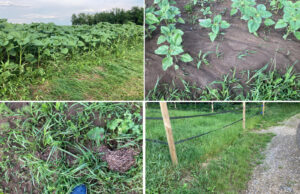
Traces of overland flow in the sunflower fields (top and bottom left), but not in the pasture (bottom right)


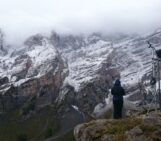
Axel Bronstert
Hi Bettina,
very nice Blog!
One should try to collect several such experiences and observations. In Braunsbach, MAy 2016 (SW Germany), there were similair recordings (taken throuigh mobile videos…).
Have a nice weekend,
Axel